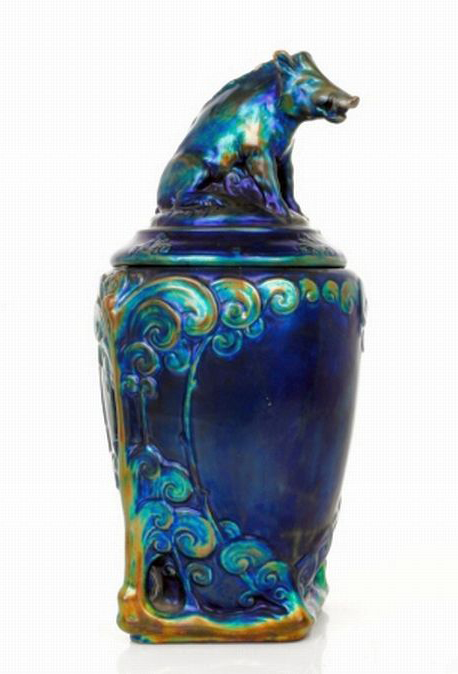Learn about antiques and collectables...
Click on a category below to show all the entries for that category.
Learn about and understand the items, manufacturers, designers and periods as well as the specialist terms used in describing antiques and collectables. Either click one of the letters below to list the items beginning with that letter, or click on a category on the left side of the screen to list the items under that category.
Zanotta
Zanotta is an Italian furniture company founded in 1954 by Aurelio Zanotta. The company is known for its mid-century and later furniture designs, many of which have become iconic. The company's early designs were inspired by the Italian Rationalist movement, which emphasized simplicity and functionality and their first major success was the "Sacco" bean bag chair, designed by Piero Gatti, Cesare Paolini, and Franco Teodoro in 1966. The Sacco was an instant hit, and it remains one of Zanotta's most popular products. Zanotta worked with several influential designers, including Achille and Pier Giacomo Castiglioni, who created the iconic Mezzadro stool in 1957. The Mezzadro stool features a tractor seat attached to a metal frame and is considered a classic of industrial design. Another notable collaboration was with Gaetano Pesce, who designed the iconic UP Series in 1969, featuring sculptural armchairs and sofas with a distinctive organic form.
In the 1970s, Zanotta began to work with a new generation of designers, including Achille Castiglioni, Ettore Sottsass, and Alessandro Mendini. These designers helped to define the company's new direction, which was characterized by a playful and experimental approach to design. Some of Zanotta's most famous designs from this period include the the "Mezzadro" chair, designed by Castiglioni in 1979; and the "Daybed" sofa, designed by Mendini in 1984. In the 1990s, Zanotta continued to work with leading designers, such as Ross Lovegrove and Alfredo Häberli. In addition to working with established designers, Zanotta also embraced the talent of emerging designers. This commitment to nurturing new design talent led to collaborations with names such as Carlo Mollino, Emaf Progetti, and Enzo Mari, among others. The company also began to focus on sustainability, and it introduced a number of environmentally friendly products.
Over the years, Zanotta's designs have received numerous awards and recognition, including prestigious accolades such as the Compasso d'Oro, which honors excellence in Italian design. The company's products are sold in over 70 countries, and they are featured in museums and design collections around the globe.
Zitan Wood
Zitan is the most expensive, and since ancient times, has been considered the most precious of woods.
Zitan wood is the hardest and heaviest of all hardwoods. It is purplish-black to black in colour, and with a grain so dense it is virtually invisible.
Zitan can usually only be obtained in quite narrow strips and so it is rare to find large pieces of furniture made from this wood. True Chinese rosewood is a variety of zitan and is very rare.
Zoomorphic
Objects made having the shape, form, or likeness of an animal. For example, the Hindu god Ganesha has the head of an elephant.
The term is also applied to furniture made from animal parts. Examples are chandeliers, hallstands and chairs made from deer antlers and umbrella stands, ice buckets and other objects made from an elephant's foot.
Zsolnay Porcelain
The Zsolnay porcelain business was established in 1853 at Pecs, in Hungary, about 200 km south of the capital of Budapest, by Miklos Zsolnay for his son Ignac. In 1862 the younger brother Vilmos took over and expanded the business, producing stonewares decorated in traditional Hungarian styles.
The factory became a leading producer of Art Nouveau ceramics in eastern Europe, and the factory's first major success was at the 1873 World Exhibition in Vienna, which resulted in many export orders. This was followed by participation in the 1878 World Exhibition (1878) Melbourne (1880), Brussels (1888), Chicago (1893) and Antwerp (1894).
After the appointment in 1893 of a new artistic director, Vinsce Wartha, the factory began to make wares of organic form with iridescent glazes that appear metallic and change in hue depending on the angle of reflection, and these were exhibited in 1896, on the occasion of the millennium of the Hungarian Kingdom.
This range was given the name "eosin", from a Greek word "eos" (flush of dawn), which referenced the light red iridescence of the first hue produced. Further eosin colours were introduced, together with finishes such as hand-painted, etched and marbled.
Vilmos Zsolnay died in 1900 and his son Miklós took over, and by the outbreak of World War I Zsolnay was the largest company in Hungary. During the war the Zsolnay turned to manufacturing war-related ceramics, and after the war returned to the manufacture of decorative ceramics on a reduced scale.
During World War II Zsolnay's Budapest factory was bombed, and the company was nationalised under Communist rule in 1948 and "Zsolnay" dropped the from the company's name, but was reinstated in 1982, when the company again became independent.
Zsolnay continues to create original designs as well as issue new editions of past products.
